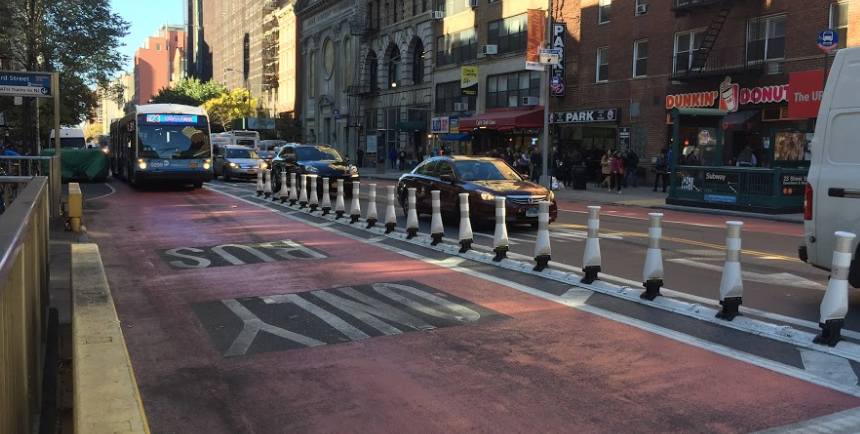The improvements that would speed up trips for NYC bus riders are largely the same changes that would make bus drivers' jobs less stressful and aggravating, according to a survey released today by TWU Local 100.
In a first-of-its-kind survey of 400 bus operators, TWU found that double-parked vehicles and motor vehicle traffic are the top sources of stress on the job, and that bus operators see all-door boarding and traffic reduction as the top two ways to improve their effectiveness.
Double-parked cars were the source of stress cited most often by bus drivers (29 percent said it was the biggest cause), followed by car traffic (19 percent). Car traffic was also pegged as the top cause of bus bunching, with 53 percent of bus drivers citing it.
The survey reinforces the union's support for all-door boarding on every bus route. In October, the TWU joined advocates in calling for speedy adoption of fare technology that will enable systemwide all-door boarding.
The TWU told the Post's Danielle Furfaro that it wants bus lane designs with physical barriers to keep cars from interfering with service. The union said in a statement that DOT should be "much more aggressive when it comes to making mass transit the top priority, not the movement of private cars and trucks," and "should put physical barriers along some bus-only lanes to stop private cars and trucks from invading the dedicated space."
NYC bus lanes mainly rely on camera enforcement to keep cars and trucks out, but it's not enough -- they're often obstructed by parking placard holders or delivery vehicles. Curbside bus lanes with physical barriers, pictured at the top of this post, are extremely rare.
While the TWU hasn't taken a position on congestion pricing, the survey suggests substantial support among bus drivers for reducing the amount of traffic on NYC streets.
Newly appointed NYC Transit President Andy Byford has said turning around the decline in MTA bus speeds and bus ridership is a top priority.
"We agree with the new president of NYC Transit that there should be a Bus Action Plan, and bus drivers should be heard on what's wrong with the system and how to make it better," said JP Patafio, a vice president at TWU Local 100. "That's why we did this survey. To improve service and alleviate the conditions that make driving a bus in NYC such a stressful job."






